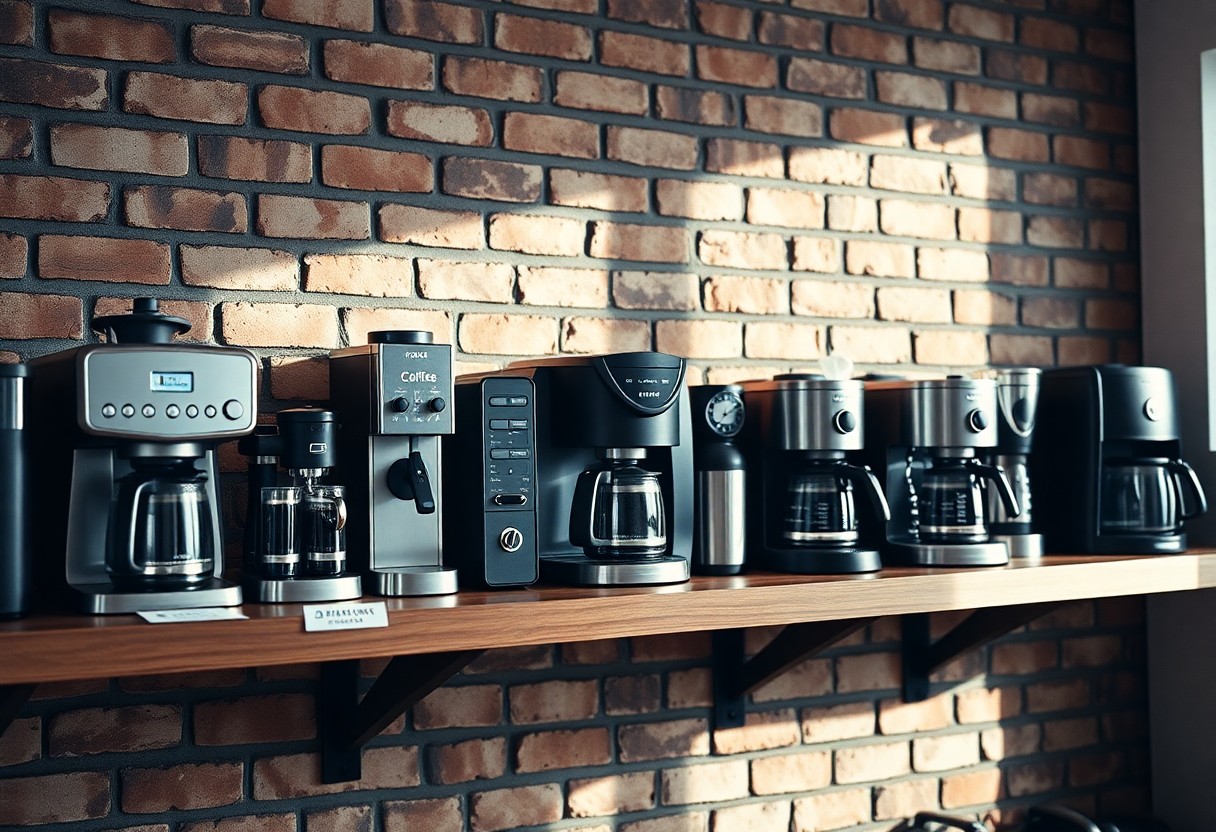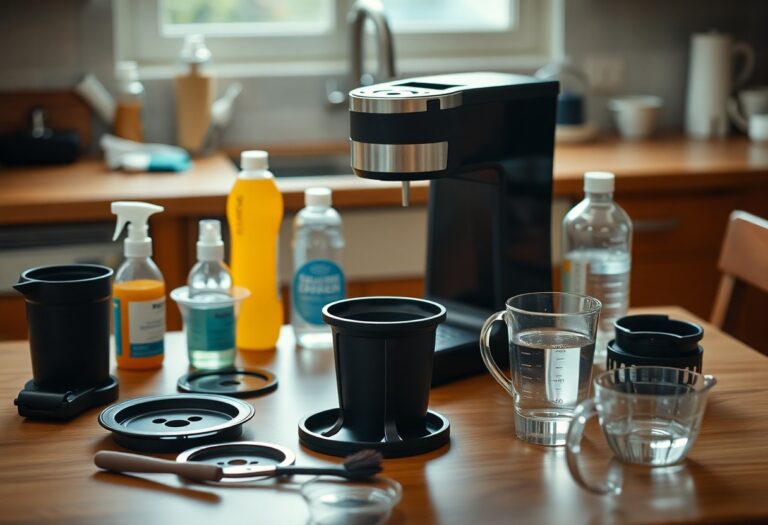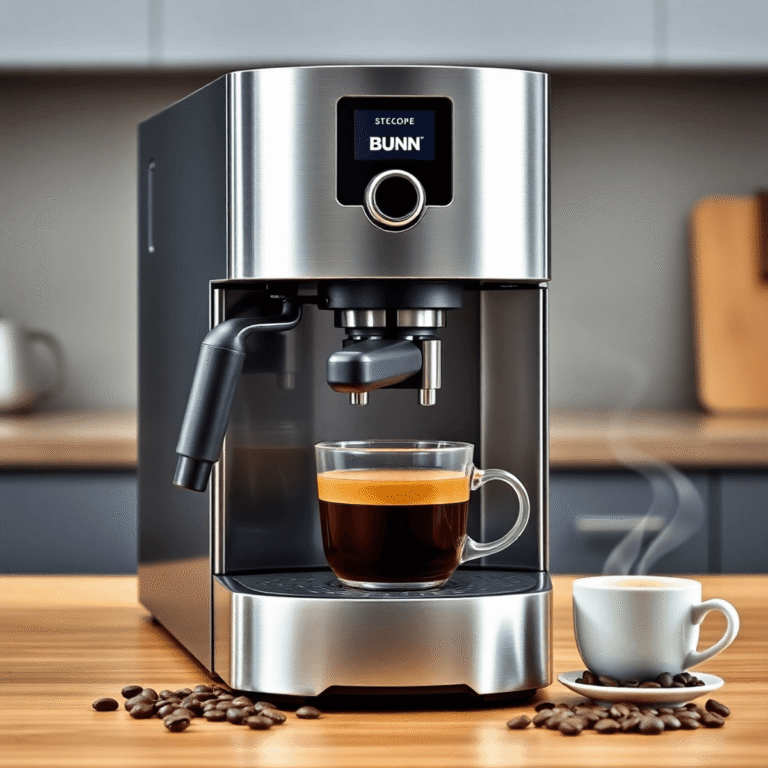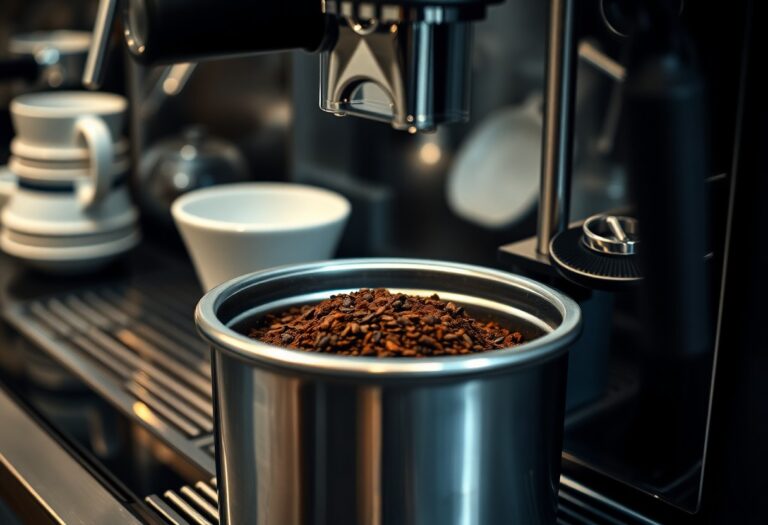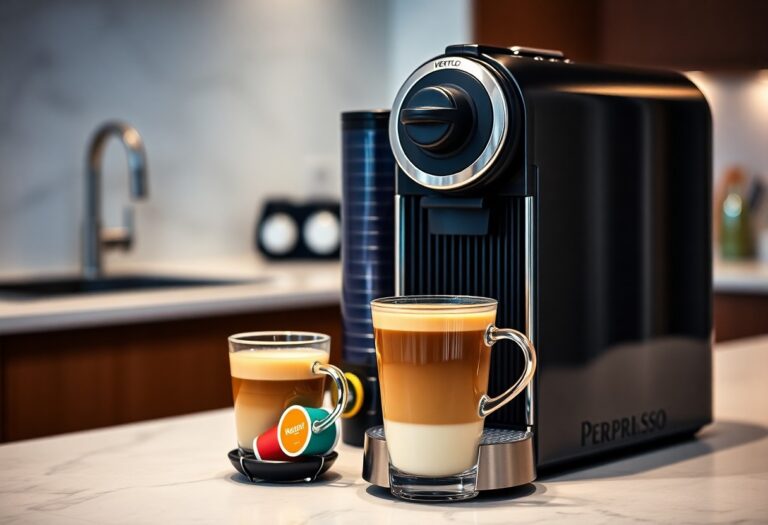What Do You Call a Coffee Machine – Common Names
You might be surprised to learn that a coffee machine can go by many names, each reflecting its unique function or feature. From traditional drip coffee makers to innovative espresso machines, the terminology you use can vary by region and personal preference. Understanding these common names not only enriches your coffee vocabulary but also enhances your ability to choose the right machine for your brewing needs. In this post, we will explore the various terms and their meanings to help you navigate the world of coffee-making equipment with confidence.
Key Takeaways:
- Coffee machines are known by various terms such as coffee maker, espresso machine, and drip coffee brewer.
- Regional differences influence the names people use, with some preferring terms like ‘percolator’ or ‘French press’ based on brewing methods.
- All-in-one coffee machines often encompass multiple brewing options, leading to alternative names like ‘coffee station’ or ‘coffee center.’
- Specialty coffee machines, such as single-serve pod machines, are commonly referred to by brand names like Keurig or Nespresso.
- Understanding these terms can help in selecting the right equipment for personal coffee preferences or gifting occasions.
Nomenclature Evolution: Tracing the Origins of Coffee Machine Terminology
The terminology surrounding coffee machines has transformed significantly over the centuries, often reflecting technological advancements and cultural shifts. Initially, simple brewing devices like percolators and siphon pots were named for their functions. As espresso machines emerged in the early 20th century, names became more specialized, introducing terms like “barista” and “ristretto.” Today, the lexicon includes a plethora of choices, influenced by marketing and regional preferences, showcasing how language evolves in tandem with innovation in coffee culture.
Historical Perspectives on Coffee Brewing Devices
Throughout history, coffee brewing devices have influenced social customs and technological development. From the use of clay pots in ancient Yemen to modern espresso machines in bustling Italian cafes, each device represents a unique chapter in coffee history. The bastion of coffee culture has shifted, with various machines finding popularity in different eras. For example, the French press emerged in the mid-19th century, allowing home brewers to enjoy café-quality coffee, while the drip coffee maker revolutionized the daily routine for countless households in the 1970s.
The Influence of Cultural Variations on Naming
Cultural variances have significantly shaped the naming conventions for coffee brewing devices. Regional terms often reflect local customs and preferences. In Italy, the iconic espresso machine is simply referred to as “macchina,” which translates to machine, highlighting its integral role in daily life. Conversely, countries like Sweden embrace terms like “kaffebryggare” for drip machines, directly linking them to communal coffee traditions. These linguistic distinctions often extend beyond language, as they encapsulate the social and cultural attitudes towards coffee across the globe.
Diving deeper into the influence of cultural variations, you can see how historical events and social practices have dictated naming regimens. For instance, Japan’s elaborate tea ceremony has parallels in their meticulous coffee brewing methods, which has led to unique devices named after traditional practices. Similarly, in Brazil, the “cafézinho” embodies the country’s vibrant coffee culture, and surprisingly, even the devices used are known by affectionate terms that evoke a sense of community. Such names not only convey the function of these machines but also embody the essence of the coffee-drinking experience tied to specific cultures.
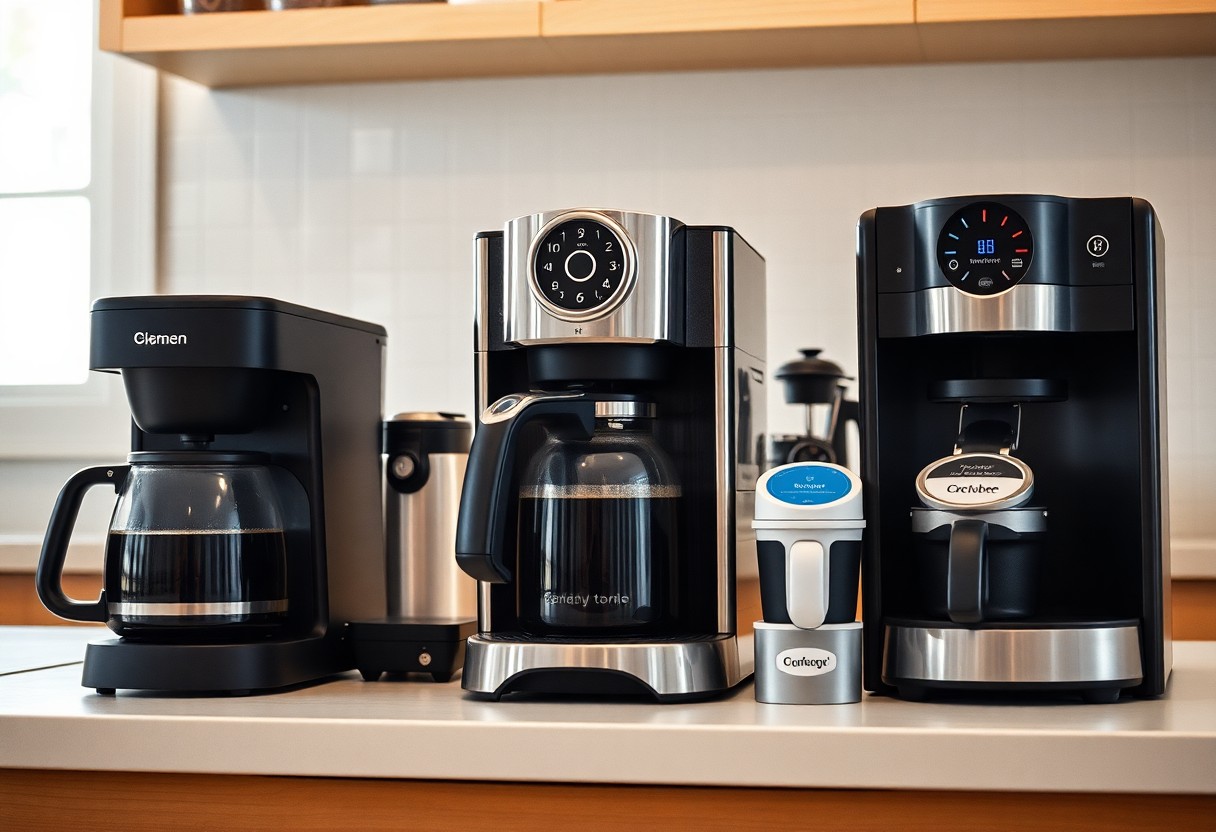
The Great Coffee Machine Divide: Types and Their Common Names
Understanding the myriad types of coffee machines can feel overwhelming, but each has its unique charm. From the sophisticated espresso machines to the reliable drip coffee makers, the names often help distinguish features and brewing methods. Here’s a quick look at how these beloved machines break down:
| Type of Coffee Machine | Common Names |
|---|---|
| Espresso Machines | Espresso, Macchiato, Americano |
| Drip Coffee Makers | Mr. Coffee, Brew Station, Coffee Pod Machine |
| French Presses | Press Pot, Cafetière, Plunger Pot |
| Single-Serve Machines | Keurig, Nespresso, Pod Coffee Makers |
| Percolators | Stovetop Percolator, Electric Percolator |
Any coffee enthusiast will find that learning these common names can enhance your appreciation for each brew method.
Espresso Machines: From Macchiato to Americano
Espresso machines are celebrated for their ability to produce rich, concentrated coffee. You can savor a variety of drinks, such as a classic macchiato or a smooth americano, all stemming from this little powerhouse. Your choice influences the milk or water ratios, showcasing the versatility and flavors that espresso machines bring to your coffee routine.
Drip Coffee Makers: The Kitchen Staple’s Many Titles
Drip coffee makers remain a beloved choice due to their ease of use and ability to brew large quantities. Often referred to by names like Mr. Coffee or Brew Station, these machines simplify the brewing process. You can enjoy consistent flavor and a reliable daily cup brewed at home or in the office.
The popularity of drip coffee makers has led to various styles and enhancements over the years. Modern models can offer programmable features, built-in grinders, or even thermal carafes for better heat retention. Whether you prefer a simple machine or a high-tech version, the drip coffee maker is crucial for coffee aficionados looking for convenience and classic taste.
French Presses: The Artisanal Method’s Namesake
French presses, also known as press pots or cafetières, serve as an artisanal choice for coffee lovers. This manual brewing method allows you to control steeping time and temperature, resulting in a rich, flavorful cup. The name ‘French press’ pays homage to its heritage, but regional variations exist and can contribute to its overall appeal.
This brewing method is ideal for those who enjoy a full-bodied coffee experience. By steeping the coarsely ground coffee beans in hot water and pressing down the plunger, you unlock deeper flavors and crucial oils that other methods may not provide. The French press can be a beautiful addition to your kitchen, highlighting the care and craft behind each cup of coffee you enjoy.
The Role of Branding in Coffee Machine Names
Branding plays a significant role in shaping how coffee machines are perceived within the market. Innovative brands build their identity around the emotional experience of brewing your morning cup, often associating their products with specific lifestyles or qualities, such as artisanal craftsmanship or high-tech convenience. The names chosen for these machines are not just labels; they are carefully crafted elements aimed at enticing customers. This reflects the overall trend of What are the different types of coffee makers?, where branding influences both recognition and preference among consumers.
Iconic Brands and Their Influence on Common Terminology
Brands like Keurig and Nespresso have redefined coffee culture, creating terms that are now widely recognized and used. Your experience with a coffee machine is often tied to the name of the brand itself; for example, “K-cup” has become synonymous with single-serve coffee. This influence demonstrates how brands not only market their products but also shape the language around coffee brewing, making their names an integral part of everyday vocabulary.
The Marketing Language Behind Coffee Machine Designs
The terminology used in marketing coffee machines is carefully chosen to evoke feelings of quality, convenience, or sophistication. Descriptive phrases like “barista-quality,” “home café,” or “brew-station” emphasize the experience you can expect while using the machine. By employing such enticing language, brands deftly influence consumers’ purchasing decisions and shape perceptions about the brewing process. This strategic communication helps distinguish and position their products within a crowded marketplace.
Digging deeper into marketing language reveals that terminology often aligns with specific consumer desires. For instance, terms such as “eco-friendly” cater to environmentally conscious buyers, while “smart brewing technology” resonates with tech-savvy individuals. By tapping into these aspirations, brands successfully create a powerful connection between their products and your lifestyle preferences. This not only helps in product differentiation but also ensures that you feel an emotional resonance with your coffee machine of choice, making it less of a mere appliance and more of an imperative part of your daily ritual.
Coffee Enthusiasts Speak: Terminology within the Community
Within the coffee-loving community, specialized terms abound, showcasing the shared passion and knowledge of its members. You’ll often hear phrases like “single origin” or “cold brew” in casual conversation or at coffee shops. Understanding this Types of Commercial Coffee Makers & Espresso Machines jargon can significantly enhance your coffee experience, showcasing your commitment to quality and craft. Engaging with these terminologies not only makes you a more informed consumer but connects you with a vibrant community of enthusiasts.
Slang and Jargon: How Coffee Lovers Communicate
Every community has its unique language, and the coffee world is no exception. As you dive deeper into coffee culture, you’ll encounter terms like “cupping” for tasting and “bloom” to describe the initial brewing phase. Such jargon helps you bond with fellow enthusiasts and elevates your appreciation for coffee’s complexities, creating a shared language that enriches discussions.
Regional Variances in Coffee Machine References
Different regions have distinct preferences for referring to coffee machines, which reflects both culture and tradition. For instance, in the U.S., you might find a “drip coffee maker” as a staple appliance, while individuals in Italy often refer to a “moka pot.” These variations highlight the rich tapestry of coffee culture around the globe, showcasing how local practices influence terminology.
In fact, the differences in naming conventions often stem from historical and cultural factors. For instance, the ubiquity of espresso machines in Italian homes has led to a lasting love for terms like “caffè” which signifies strength and intensity, while coffee aficionados in Scandinavian countries might use “percolator” as a nod to traditional brewing methods. This demonstrates how regions not only prefer specific brewing techniques but also express their coffee identity through language that resonates with their heritage.
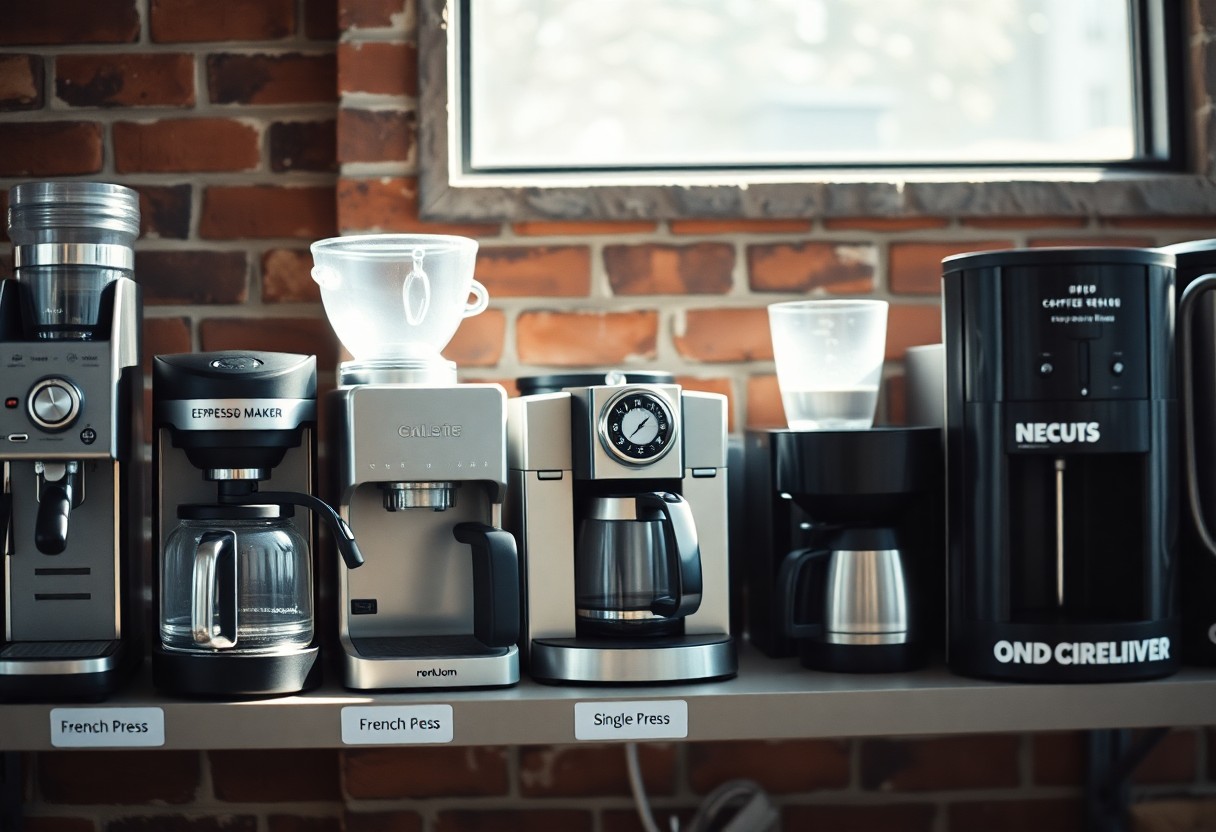
Impact of Technology on Coffee Machine Naming Conventions
Advancements in technology have significantly influenced the terminology surrounding coffee machines, shaping how you understand and relate to your brewing equipment. As innovation continues to evolve, names often reflect the latest functionalities and features of these machines. This shift in nomenclature not only highlights modern brewing capabilities but also enhances your experience as consumers embrace the art of coffee-making through tech-driven solutions.
The Rise of Smart Coffee Makers and New Terminology
Smart coffee makers, equipped with features like Wi-Fi connectivity and app integration, are redefining how you view your brewing tools. Terms such as “connected brewer” and “app-controlled coffee maker” have emerged, emphasizing the gadgets’ ability to streamline your coffee routine and elevate your overall experience. These developments signal a shift towards personalization and convenience, allowing you to enjoy a perfectly brewed cup with just a few taps on your smartphone.
Integrating Modern Vocabulary in the Coffee Lexicon
Modern vocabulary in the coffee lexicon showcases the blending of technology with traditional brewing methods. You might encounter phrases like “single-serve pod system” or “cold brew concentrate,” which reflect the advancements and variations in coffee-making techniques. As you explore different machines, these terms not only make conversations around coffee more relevant but also help you navigate the diverse world of brewing equipment.
As coffee culture continues to evolve, incorporating modern terminology enhances your understanding and enjoyment of the brewing process. Terms like “pour-over,” “cold brew,” and “espresso machine” have become more descriptive, allowing you to specify your preferences with precision. This evolution of language can also lead you to discover new brewing methods and technologies, enriching your experience as a coffee enthusiast. Staying current with these terms helps ensure that your coffee rituals are both enjoyable and informed, connecting you with the latest trends in the ever-expanding coffee landscape.
Final Words
With this in mind, understanding the various names for coffee machines can enhance your knowledge and make your coffee experience more enjoyable. Whether you refer to it as a coffee maker, espresso machine, or French press, knowing these terms allows you to communicate better with fellow coffee enthusiasts and guides your purchasing decisions. By being familiar with these common names, you can navigate the world of coffee equipment with confidence, ensuring that you choose the right machine for your brewing needs.
FAQ
Q: What is the most common name for a coffee machine?
A: The most common name for a coffee machine is simply “coffee maker.” This term is widely understood and encompasses various types of machines designed for brewing coffee.
Q: Are there different types of coffee machines, and do they have specific names?
A: Yes, there are several types of coffee machines, each with its own name. Common types include drip coffee makers, espresso machines, single-serve coffee makers (like Keurig), French presses, and Turkish coffee pots. These names reflect the specific brewing method used by each machine.
Q: What do people refer to espresso machines as?
A: Espresso machines are often referred to simply as “espresso makers” or “espresso machines.” Some might also use the term “café machine” in certain regions or contexts, reflecting its use in commercial coffee shops.
Q: Why are single-serve coffee makers so popular, and what are they called?
A: Single-serve coffee makers have gained popularity due to their convenience and speed. They are commonly called “pod coffee makers” or “single-serve brewers,” since they typically use pre-packaged coffee pods for brewing individual cups.
Q: Do people use different names for coffee machines in various countries?
A: Yes, terminology can vary significantly across different countries and cultures. For example, in Italy, espresso machines might be referred to as “macchine per caffè,” while in France, a coffee maker may be called a “cafetière.” These variations showcase regional preferences and linguistic differences in coffee culture.

